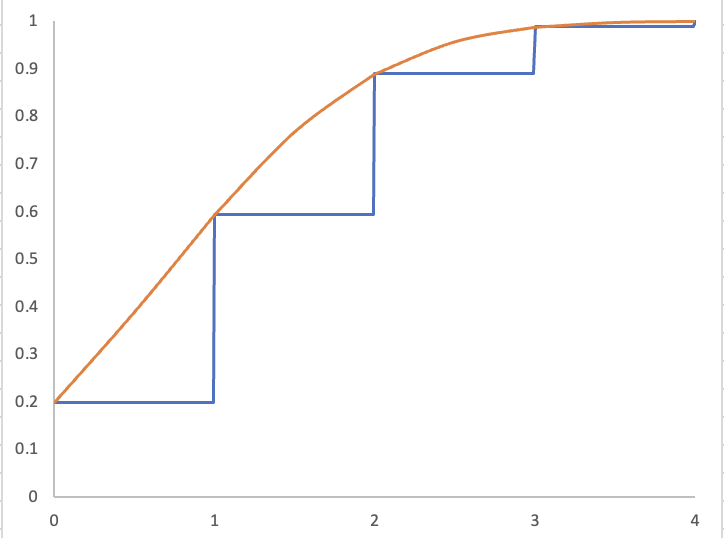I know that the beta distribution is the generalized continuous case of the discrete binomial distribution. Let's say I have a binomial distribution, $B(N,p)$. I would like to know the corresponding $\alpha$ and $\beta$ such that the binomial CDF of any count, $k$, in $\{0,1,2,...,N\}$ equals to the beta CDF at $x = k/N$.
In terms of equations, I would like the functions $f(x)$ and $g(x)$ such that:
- $\alpha = f(N,p)$ and $\beta = g(N,p)$, and
- CDF of $B(k,n,p) = $ CDF of $Beta(k/N, \alpha, \beta)$ where
- $N$ in $\mathbb{N}$,
- $p$ in $(0,1)$, and
- $k$ in $\{0,1,2,...,N\}$
I have been in search for a while but I find no direct answer. I don't have much maths background and I am hoping for an easy answer in terms of $f(x)$ and $g(x)$.


